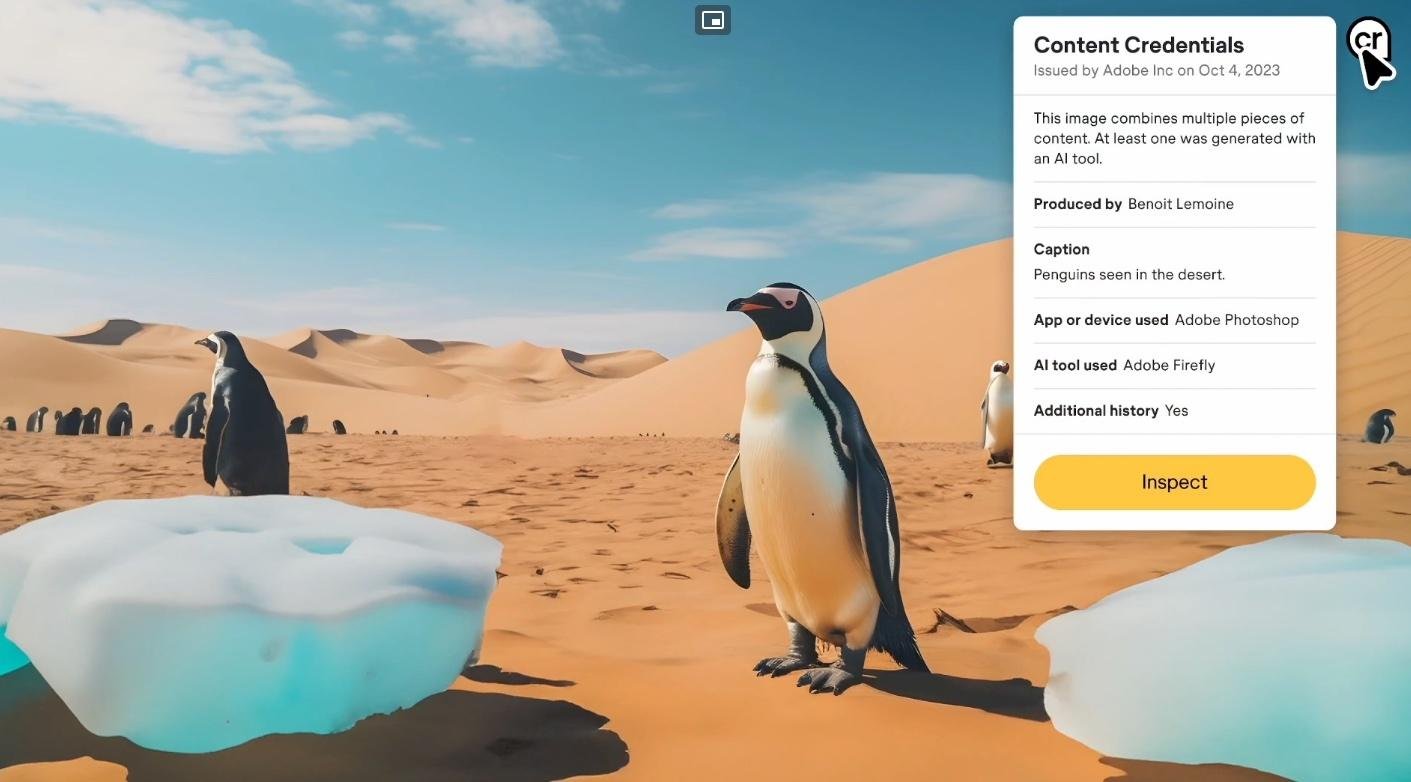Adobe is pushing for companies to watermark AI-generated images
The Adobe executive spearheading an initiative to flag AI-generated images says he hopes that Apple and X will soon join the coalition of companies that have agreed to do so.
Content Credentials is an open standard designed to increase the transparency of AI-generated content. It aims to embed metadata and put a little “CR” logo in the top corner of images that have been entirely generated by AI, making it obvious to consumers that an image isn’t real.
Content Credentials is managed by the Coalition for Content Provenance and Authenticity (C2PA), whose members include Adobe, Google, Microsoft, OpenAI, Meta, the BBC and many other technology and media companies. However, there are a few notable absentees from the list of consortium members, including Apple and Elon Musk’s X.
AI Images Flagged In Browsers
The success of a scheme such as Content Credentials will hinge on widespread adoption, with users able to see the Content Credentials logo no matter which device or social network they’re using.
Andy Parsons, senior director of the Content Authenticity Initiative at Adobe, said that it was only a matter of time before support for showing the CR logo on AI-generated images was built into popular web browsers, such as Google Chrome.
“We’d like to see more ubiquitous, visible adoption so consumers can recognize the little Content Credentials icon and have it be something, I think, that could be as recognizable and ubiquitous as the copyright symbol,” Parsons said at a one-on-one briefing at CES 2025 in Las Vegas last week.
However, cross-device support will hinge on Apple agreeing to be part of the scheme, with Safari commanding around a fifth of the global mobile browser market according to Statcounter.
“We hope to see Apple join,” Parsons said. “Apple is notably absent from the consortium, but I hope that will change, maybe this year.”
“My impression is that Apple tends to be very slow in joining standards groups,” he added. “Historically, they tend not to do that until something is very well established and they kind of have to.”
Parsons added that he hoped Apple wouldn’t create a competing standard for flagging AI content, claiming that it would be bad for everyone involved if there were different watermarks being applied to AI images. “My hope would be that, in the fullness of time, Apple would agree with that point of view, but we’ll see.”
Apple was approached for comment on its approach to AI images.
Musk Challenged
X’s Grok AI has few restrictions on image generation
X is another notable absentee from the list of consortium members. The social network has its own Grok AI that is capable of generating images, but unlike some rival AI services, it doesn’t attempt to prevent users generating images of well-known people such as Donald Trump engaging in controversial topics, as you can see from the image above.
When I attempted to post one of the images above, it did add an automatic “image by Grok” line to the text of the post, but that was easily deleted. If you download the image, the metadata cites “x.com” as the location of where the image was taken, but that’s not immediately accessible to a viewer on the social network.
Twitter was initially a member of the C2PA but “then some stuff happened and they became less active,” said Parsons.
Parsons said that he raised the issue with Elon Musk at an AI conference in London last year, hosted by then U.K. Prime Minister Rishi Sunak.
“Rishi Sunak called on me as the last question before the proceedings ended, and I asked Elon directly, ‘would it be a good thing for the X platform if there were a way to cryptographically sign content to give people some objective sense of where it came from and who’s posting and what it is?’ And he gave this comically short answer. He thought for a second and said ‘that seems like a good idea, we should do that.’”
Parsons said he remained “hopeful and optimistic” that X would join the consortium, “but they are not a member.”










